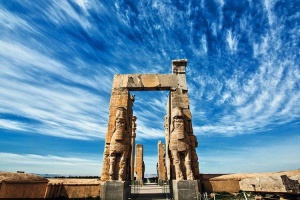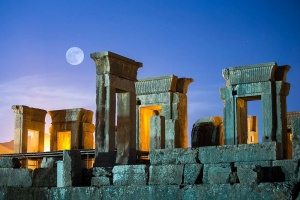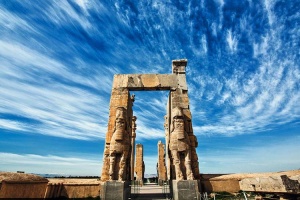
Iran is one of the world’s oldest civilizations, beginning with the formation of the Proto-Elamite and Elamite kingdom in 3200 – 2800 BCE.
The Iranian Medes unified the country into the first of many empires in 625 BCE, after which it became the dominant cultural and political power in the region. Iran reached the pinnacle of its power during the Achaemenid Empire (First Persian Empire) founded by Cyrus the Great in 550 BCE, which at its greatest extent comprised major portions of the ancient world, stretching from the Indus Valley in the east, to Thrace and Macedon on the northeastern border of Greece, making it the largest empire the world had yet seen.

The empire collapsed in 330 BCE following the conquests of Alexander the Great. The area eventually regained influence under the Parthian Empire and rose to prominence once more after the establishment of the Sasanian dynasty (Neo-Persian empire) in 224 CE, under which Iran became one of the leading powers of Western and Central Asia for the next four centuries.

Manichaeism and Zoroastrianism were largely replaced after Rashidun Muslims invaded Persia in 633 CE, and conquered it by 651 CE. Iran thereafter played a vital role in the subsequent Islamic Golden Age, producing numerous influential scientists, scholars, artists, and thinkers. The emergence in 1501 of the Safavid dynasty, which promoted the Twelver school of thought as the official religion, marked one of the most important turning points in Iranian and Muslim history. It also culminated into tensions, which in 1514 led to the Battle of Chaldiran.


